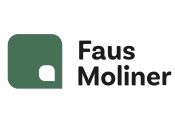Practical aspects on the new Catalan Guide on Advertising of Medicinal Products
Informative session by the Catalan Medicinal Products Surveillance and Advertising Section on 28 May 2024
Capsulas Nº 253
On 28 May, the Medicinal Products Surveillance and Advertising Section of the Catalan Government organised an explanatory session on the new features of the latest version of the Catalan Guide on Advertising of Medicinal Products for Human Use, published in February 2024. The session included a practical Q&A section where the participants raised numerous questions.
Among the new features of the guide, issues related to the use of QR codes, recall advertising, the concept and uses of valid support, and the use of digital environments generated most the debate.
QR codes use
The Catalan authorities are adamant that QR codes on promotional materials must redirect to the CIMA website in order to allow the recipient of the advertisement to access the Summary of Product Characteristics (SmPC); not being possible, according to Catalan authorities, to access the SmPC via other websites. According to the Surveillance Section, this interpretation arises from the note issued by the Ministry of Health in September 2023. In our opinion, this obligation is not so clear from the informative note, as it states that “The QR code must refer to the most updated version of the authorised SmPC, as it appears in CIMA“.
This position caused controversy in the Q&A session, in which the Catalan authorities confirmed that: (i) the redirection must be to the CIMA website, even if the recent SmPC is on the European Medicines Agency (EMA) website in the case of centralised procedures; (ii) the QR cannot redirect to an intermediate website that in turn redirects to CIMA (a resource that can be useful, for example, in the case of materials on various medicinal products); and (iii) only in the case of a medicinal product not authorised in Spain and in the context of an international congress, the QR of the promotional material could redirect to the SmPC of the EMA or of the country where the product is authorised.
In the event that an already reported promotional material updates the way in which the minimum content is included (e.g. the minimum content changes from being written to being linked via QR), the material must be re-notified to the Catalan authorities as a new material.
Recall advertising
The position of the Catalan authorities is that recall advertising cannot include anything beyond the name of the medicinal product, logo and/or picture of the product, as well as the logo and/or name of the laboratory. If the material includes any additional references – such as the pharmaceutical form, dosage form, price or other phrases (even empty phrases) – it can no longer be considered as recall advertising and, therefore, must include the minimum content and must be notified.
Valid supports
The Catalan authorities pointed out that, while “valid support” is defined as a tool through which technical and promotional information is provided to the healthcare professional, scientific/technical content must predominate over promotional content by more than 50%.
According to the Surveillance Section, social networks could only be valid support if they allow the creation of closed groups that restrict access to content to the healthcare professional. According to the Section, messages sent via WhatsApp, Telegram or Instagram posts would not fall under this qualification. This raised doubts among those attending the session, as these tools enable private communication channels. However, the Section insisted that what needs to be assessed is whether the specific content/publication can be restricted. For instance, the Section confirmed that LinkedIn or Youtube could serve as a valid support as they allow the creation of closed groups with access to restricted content.
Finally, the Catalan authorities confirmed that the advertising incorporated in a valid support must be communicated separately from the media support itself.
Use of digital environments
The briefing emphasised the advertising restrictions applicable to each communication channel, distinguishing between display and targeted advertising, which are defined in the same guide. While display advertising is advertising that is included in a valid support and is aimed at a broad audience, targeted advertising is advertising that is sent directly to a specific healthcare professional (e.g. email or WhatsApp).
Regarding advertising on “open” platforms such as X (formerly Twitter), Instagram, TikTok or Spotify, the Catalan authorities consider that the target audience is the general public, and therefore advertising for prescription medicinal products cannot be included on these platforms. However, advertising for prescription medicinal products may be included on “closed” platforms, i.e. those that allow limiting access to their content. Examples of closed platforms are: websites (areas restricted to healthcare professionals); applications (apps); LinkedIn (closed groups); Facebook (secret groups) and even YouTube (hidden or private videos).
